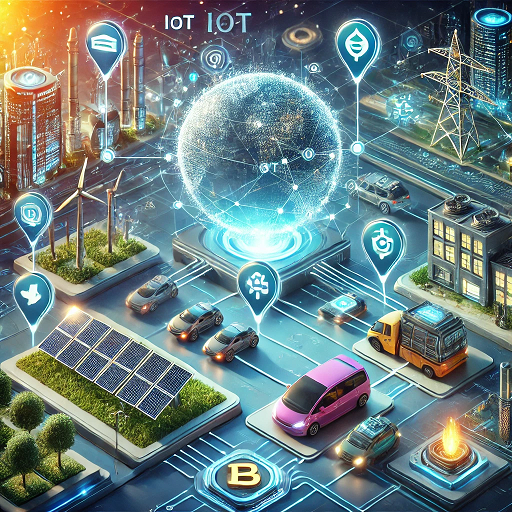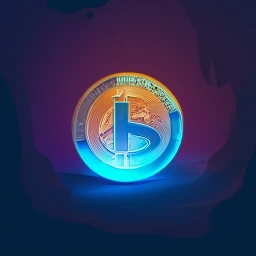Introduction
Microtransaction Tokens for IoT and Machine-to-Machine (M2M) Payments are transforming digital transactions by enabling seamless, low-cost, and automated exchanges between connected devices. As the Internet of Things (IoT) expands, the need for secure and efficient payment solutions has grown significantly. Traditional financial systems are often ill-suited for handling the volume and frequency of small transactions that IoT devices generate. This is where microtransaction tokens step in, providing a streamlined and decentralized solution.
Understanding Microtransaction Tokens
Microtransaction tokens are digital assets designed to facilitate small, automated payments between devices, applications, or users. Unlike traditional payment methods, these tokens operate on blockchain or distributed ledger technologies (DLT), ensuring security, transparency, and efficiency. The primary advantages of microtransaction tokens include low transaction fees, scalability, and automation, making them ideal for IoT and M2M ecosystems.
The Role of Microtransaction Tokens in IoT
IoT devices require frictionless transactions to function effectively. Whether it’s a smart meter paying for energy consumption or a connected car purchasing toll credits, microtransaction tokens enable these interactions without human intervention. The key benefits of integrating these tokens into IoT networks include:
- Cost Efficiency: Reducing transaction fees by eliminating intermediaries.
- Automation: Enabling devices to autonomously make payments based on predefined conditions.
- Security: Leveraging blockchain to ensure immutable and tamper-proof transactions.
- Scalability: Supporting high transaction volumes without system overload.
Machine-to-Machine (M2M) Payments with Microtransaction Tokens
Machine-to-Machine (M2M) Payments refer to automated financial transactions executed between devices without human oversight. With the rise of autonomous systems, M2M payments are becoming more prevalent in industries like smart manufacturing, logistics, and smart cities. Microtransaction tokens enhance M2M payments by:
- Ensuring real-time settlements: Devices can complete transactions instantly, improving efficiency.
- Reducing administrative overhead: Eliminating the need for manual processing and reconciliation.
- Facilitating decentralized transactions: Removing reliance on traditional banking systems and centralized platforms.
Use Cases of Microtransaction Tokens in IoT and M2M Payments
Several industries are actively leveraging microtransaction tokens to optimize their operations. Several noteworthy applications demonstrate the potential of this technology:
1. Smart Energy Grids
Microtransaction tokens allow smart meters to autonomously pay for electricity based on consumption. This peer-to-peer energy trading model enables direct transactions between consumers and producers without intermediaries.
2. Autonomous Vehicles and Mobility Services
Connected vehicles can use microtransaction tokens to pay for services such as tolls, parking, and charging stations. This streamlines the payment process, reducing wait times and improving convenience.
3. Supply Chain and Logistics
IoT-enabled supply chains use M2M payments for automated inventory management, freight tracking, and smart contract execution. By integrating microtransaction tokens, businesses can reduce delays and improve transaction accuracy.
4. Content Monetization
Microtransactions enable seamless payments for digital content such as news articles, video streaming, and music subscriptions. IoT devices like smart TVs and wearables can autonomously manage content subscriptions using tokens.
5. Smart Cities
Urban infrastructure, including smart street lighting, public transport, and waste management, can leverage microtransaction tokens to optimize resource usage and ensure transparent payments for services.
Technologies Behind Microtransaction Tokens
Microtransaction tokens rely on cutting-edge technologies to enable efficient and secure payments. The primary technologies include:
- Blockchain and DLT: Providing transparent and immutable transaction records.
- Smart Contracts: Facilitating automated payments triggered by specific criteria.
- Layer 2 Scaling Solutions: Reducing congestion on blockchain networks and enabling faster transactions.
- Edge Computing: Ensuring efficient processing of transactions at the device level.
Challenges and Considerations
While microtransaction tokens offer significant advantages, there are challenges that must be addressed for widespread adoption:
- Scalability Challenges: Managing high transaction volumes without overloading blockchain networks.
- Regulatory Compliance: Varying regulations across jurisdictions may impact adoption.
- Security Concerns: Ensuring robust encryption and fraud prevention mechanisms.
- Interoperability: Enabling seamless integration with existing financial systems.
Future of Microtransaction Tokens in IoT and M2M Payments
The adoption of microtransaction tokens is expected to grow as IoT ecosystems expand. Innovations such as AI-driven automation, improved blockchain scalability, and regulatory clarity will further drive adoption. Businesses and developers should focus on enhancing security, interoperability, and user experience to accelerate mainstream adoption.
Conclusion
Microtransaction Tokens for IoT and Machine-to-Machine (M2M) Payments represent a game-changing innovation in digital finance. By enabling secure, cost-effective, and automated transactions, these tokens unlock new possibilities for IoT and M2M ecosystems. As technology continues to evolve, microtransaction tokens will play a crucial role in shaping the future of digital transactions.


















